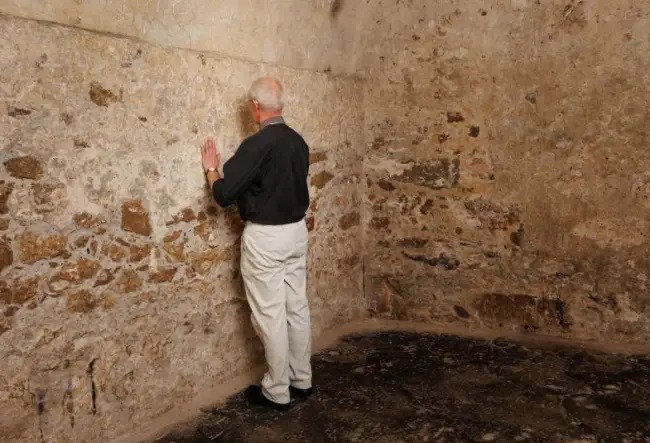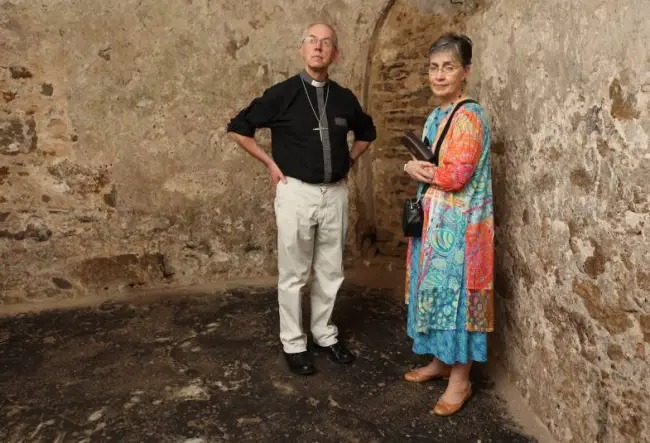The Archbishop of Canterbury visited the Cape Coast Castle, where enslaved Africans were held before being transported to the Americas on British slave ships.
He was joined by the Anglican Primates of West Africa and the West Indies, who then joined the Archbishop at a Service of Reflection and Reconciliation at nearby Christ Church Anglican Cathedral.
Originally built by the Swedish in the 1650s, Cape Coast Castle passed into Danish, Dutch, and then English possession by the 1660s, when it became the headquarters of the British colonial administration for the Gold Coast colony.
Over the course of the 18th century, most of Cape Coast Castle’s trade was in African captives bound for the Americas where they were enslaved.
Throughout the 18th century, the Castle served as a “grand emporium” of the British slave trade.
During the tour, the Archbishop, accompanied by Caroline Welby, visited the basement dungeons – known as “slave holes” – where Africans, taken from their homes sometimes hundreds of miles away, were held with little ventilation and no windows before being transported across the Atlantic.
The Archbishop paused to pray in silence in a small basement prison cell where up to 200 men were kept, underneath what was then a church.

During the tour, he also saw the women’s cells, the place where enslaved men and women were branded, and the Door of No Return through which enslaved people passed before boarding ships bound for the Americas.
Commenting on the visit, the Archbishop said “It was profoundly moving and humbling to visit Cape Coast Castle today with my brother Archbishops from Ghana and Jamaica. It was a reminder that the abomination of transatlantic chattel slavery was blasphemy: those who imprisoned men and women in those dungeons saw them as less than human.”
“It is to the Church of England’s eternal shame that it did not always follow Christ’s teaching to give life. It is a stain on the wider church that some Christians did not see their brothers and sisters as created in the image of God, but as objects to be exploited.
“Our response must begin on our knees in prayer and repentance. In calling on the God who blesses the broken, the reviled, and those who mourn. In looking to God who transforms, redeems and reconciles,” he said.
He added “But our response does not end there. We are called to transform unjust structures, to pursue peace and reconciliation, to live out the Beatitudes in big ways and small.”
The Archbishop toured Cape Coast Castle with Archbishop Cyril Kobina Ben-Smith, the Primate of the Anglican Church of the Province of West Africa; Archbishop Howard Gregory, the Anglican Primate of the West Indies, and ordained and lay members of the global Anglican Consultative Council (ACC) which is meeting in Accra this week.
The Archbishop’s visit follows the recent report published by the Church Commissioners of England into its endowment’s historic links to transatlantic chattel slavery. In response to the findings, the Church Commissioners have committed to £100 million of funding to a programme of impact investment, research, and engagement.
The impact investment fund will invest particularly in communities impacted by historic transatlantic slavery.
Source: Asaaseraadio



